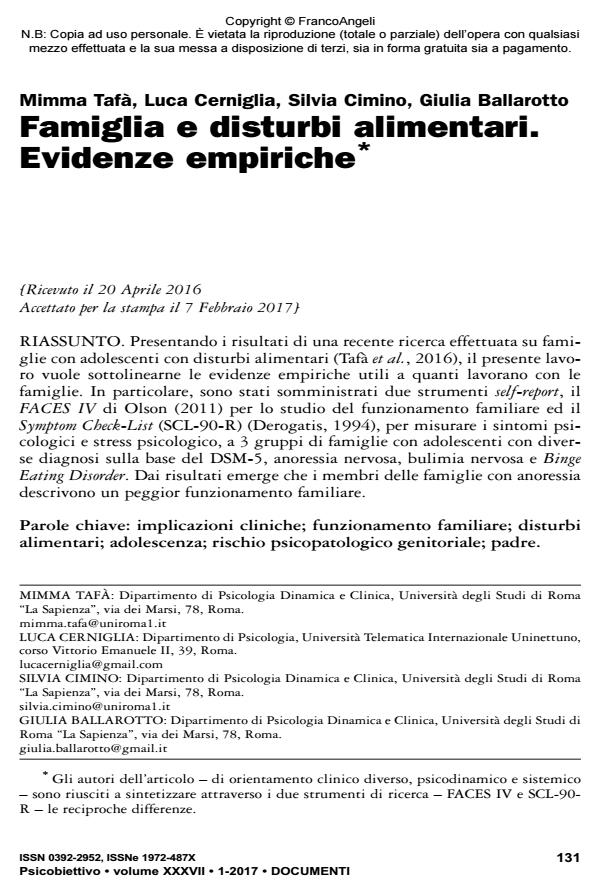Famiglia e disturbi alimentari. Evidenze empiriche
Titolo Rivista PSICOBIETTIVO
Autori/Curatori Mimma Tafà, Luca Cerniglia, Silvia Cimino, Giulia Ballarotto
Anno di pubblicazione 2017 Fascicolo 2017/1
Lingua Italiano Numero pagine 20 P. 131-150 Dimensione file 752 KB
DOI 10.3280/PSOB2017-001010
Il DOI è il codice a barre della proprietà intellettuale: per saperne di più
clicca qui
Qui sotto puoi vedere in anteprima la prima pagina di questo articolo.
Se questo articolo ti interessa, lo puoi acquistare (e scaricare in formato pdf) seguendo le facili indicazioni per acquistare il download credit. Acquista Download Credits per scaricare questo Articolo in formato PDF

FrancoAngeli è membro della Publishers International Linking Association, Inc (PILA)associazione indipendente e non profit per facilitare (attraverso i servizi tecnologici implementati da CrossRef.org) l’accesso degli studiosi ai contenuti digitali nelle pubblicazioni professionali e scientifiche
Presentando i risultati di una recente ricerca effettuata su famiglie con adolescenti con disturbi alimentari (Tafà et al., 2016), il presente lavoro vuole sottolinearne le evidenze empiriche utili a quanti lavorano con le famiglie. In particolare, sono stati somministrati due strumenti self-report, il FACES IV di Olson (2011) per lo studio del funzionamento familiare ed il Symptom Check-List (SCL-90-R) (Derogatis, 1994), per misurare i sintomi psicologici e stress psicologico, a 3 gruppi di famiglie con adolescenti con diverse diagnosi sulla base del DSM-5, anoressia nervosa, bulimia nervosa e Binge Eating Disorder. Dai risultati emerge che i membri delle famiglie con anoressia descrivono un peggior funzionamento familiare.
Parole chiave:Implicazioni cliniche; funzionamento familiare; disturbi alimentari; adolescenza; rischio psicopatologico genitoriale; padre.
Mimma Tafà, Luca Cerniglia, Silvia Cimino, Giulia Ballarotto, Famiglia e disturbi alimentari. Evidenze empiriche in "PSICOBIETTIVO" 1/2017, pp 131-150, DOI: 10.3280/PSOB2017-001010